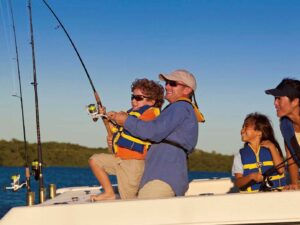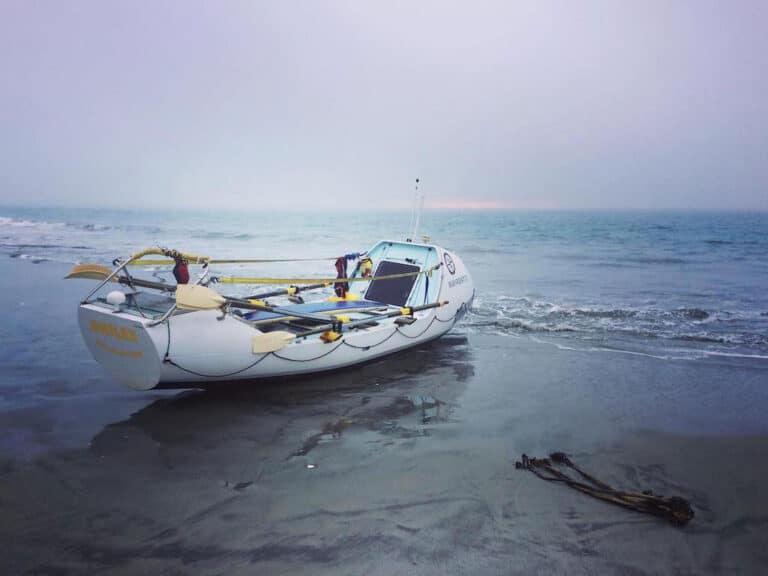
Here is what boaters should know about tides to stay safe on the water.
- What is tide? It’s water’s vertical movement. Tidal current flows in and out, and tides rise and fall.
- If you’ve ever read Eldridge or a similar tide book, you know that tidal current can still be moving in even though the tide has started to fall.
- The rise and fall of tides are caused primarily by the moon. Though much smaller, the moon exerts 2.25 times the amount of gravitational pull on the oceans as does the sun. This is due to it being so much closer to Earth.
- When tides fall, the water goes from the poles to the equator. The spinning Earth creates centrifugal force that causes the water at the poles to be shallower and creates a bulge of water at the equator. Thus, there’s always a place for the water to go.
- Neap tides, like the word “neap” itself, which means near even as possible, show little difference in height between high and low tide. Neap tides occur when the moon and sun are at right angles to the Earth. This results in quarter moon.
- Spring tides are higher and lower than normal. Spring tides occur when the sun and moon are aligned with the Earth. This full alignment occurs during periods of full moon and new moon. At other times – with one exception – the gravitational pulls of moon and sun work against each other. The alignment multiplies the gravitational pull, creating higher highs and lower lows. The stars, on the other hand, exert only a minimal gravitational pull on the Earth.
- During a solar eclipse, spring tides will occur. The moon blocks the sun’s light during an eclipse, but its gravity pulls just the same.
- While tidal movement is caused by the sun and moon, the tidal day is actually 24 hours and 50 minutes long. This is because it takes a while to get all that water moving. Yes, there’s friction between earth and sea.
- A region experiencing semidiurnal tides has two high tides and two low tides per day. The most common type of tides is semidiurnal.
- Diurnal tides, in which there is but one high and one low per day, occurs only in select locations such as the Java Sea, the Tonkin Gulf and the Gulf of Mexico.
- Mixed tides are semidiurnal tides in which there are great differences between the height of each of the two daily highs and each of the two daily lows.
- The Rule of Twelfths is a rule of thumb allowing you to estimate the height of tide and the relative current flow for any area experiencing diurnal tides. It is expressed as a fraction of total volume per hour. All you need to know is the time of high or low tide. Starting from there, the tide will move in or out over the next six hours as follows: 1/12, 2/12, 3/12, 3/12, 2/12, 1/12.
- Using the Rule of Twelfths can be important while cruising. For example, you can estimate when the most water will be flowing through an inlet — generally during the middle of a tide — which can cause the roughest conditions. Or in shoal areas, you can estimate how much water to expect beneath your keel at a given time.
The U.S. Coast Guard is asking all boat owners and operators to help reduce fatalities, injuries, property damage, and associated healthcare costs related to recreational boating accidents by taking personal responsibility for their own safety and the safety of their passengers. Essential steps include: wearing a life jacket at all times and requiring passengers to do the same; never boating under the influence (BUI); successfully completing a boating safety course; and getting a Vessel Safety Check (VSC) annually from local U.S. Coast Guard Auxiliary, United States Power Squadrons(r), or your state boating agency’s Vessel Examiners. The U.S. Coast Guard reminds all boaters to “Boat Responsibly!” For more tips on boating safety, visit www.uscgboating.org.








